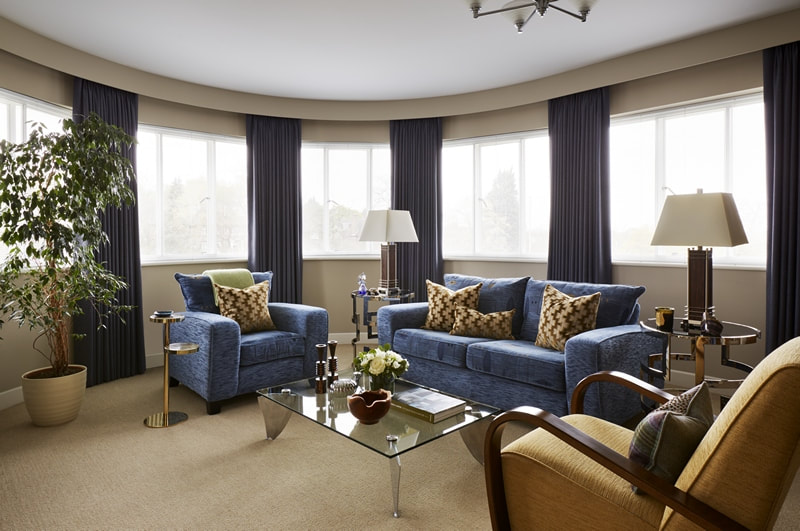|
For most people their living room is an often-used space; one that is used for relaxing, watching television, reading the weekend papers and entertaining friends and family. As far as rooms go, this one has to work hard with its multiple uses, but you also want it to look great, of course. So how do you design a room that balances practicality with aesthetic beauty? Focus on the five elements I’ve outlined below and you’ll soon be on your way to having a living room that will not only function effortlessly, but will also be comfortable and stylish. 1. Define a focal point in the roomEvery living room needs to have a focal point. This could be a fireplace, a key piece of artwork, an architectural feature such as an exposed brick wall or even built-in joinery. The aim of the focal point is to help draw the eye to an area of visual interest in the room. It can also help you determine the layout of the furniture within the space, but whatever you do, steer clear of making your latest flat screen television the focal point! 2. Consider the arrangement of the furnitureThe arrangement of the furniture will be dictated by how you use the living room. Think about the size and shape of the room and the amount of seating you need. As living rooms bring people together, aim to arrange the furniture so that it promotes conversation and interaction. If you have a small room, it’s best not to fill it full of furniture - you want to ensure everyone can move around easily without having to squeeze through awkward spaces. If you have a large living room, it’s a great opportunity to create zoned activity areas, for example a seating arrangement for conversation, an area for reading or quiet contemplation and so on. 3. Factors to think about when using colourIt’s amazing how colour can transform the entire look and feeling of a room. If you’re not very confident in using colour, an effective way to incorporate it is by introducing an accent colour, for example, within soft furnishings and accessories, set against a neutral backdrop. An alternative is to pick one colour and then incorporate its different shades and tones into the room. The colour scheme you choose will set the overall mood: blues, greens and purples evoke a cooler feeling, whereas reds, yellows and oranges evoke a feeling of warmth. When choosing colour for your living room, you should take into account other factors such as the amount of natural light the room gets, the direction it faces (south facing rooms get a lot of natural light, whereas north facing rooms don’t get as much, making them more challenging when it comes to choosing colour) and importantly, what colours you like and dislike! 4. Layer the lighting within the roomIn order to create a living room interior that’s relaxed and comfortable, you should have a number of different light sources within the space, which will help create a layered effect. Architectural lighting, including down-lights and lighting within joinery, provide the ambient or background lighting for a room. Table lamps, floor lamps, wall lights and ceiling pendants provide more decorative and task lighting. When planning the lighting, and in order to execute a more layered effect, aim to have a combination of the latter, ideally with lamps that have a warmth level of 2,700 kelvin or under. 5. Artwork to provide the finishing touchAs soon as you put artwork up in a room, it begins to come alive. There are many factors to consider when hanging art and pictures in your room including scale, balance, composition and lighting, but the key thing for most displays is to ensure that the size of the artwork is relative to the wall space it will go onto. Generally, if you have a large expanse of wall, the artwork should be of relative scale. If you have a large number of smaller pieces, you can cluster them together, arrange them in a grid or linear formation and so on. Also think about the colours within the artwork and how they’ll complement the rest of the interior, though don’t be afraid to use a piece that’s not entirely in keeping with the scheme - it keeps things interesting and after all, it’s your living room!
Whatever your personal tastes in interiors and whether you like contemporary, classical, country, mid-century modern or Hollywood Regency style interiors, the key elements I’ve outlined above should help guide your thinking when you’re planning and designing a room. If you need professional guidance on any of the areas discussed above, please get in touch.
0 Comments
|
ABOUTSam Bheda is an interior designer working on residential and commercial interiors in London, Suffolk and Cambridgeshire. CONNECTARCHIVES
November 2018
CATEGORIES
All
|

